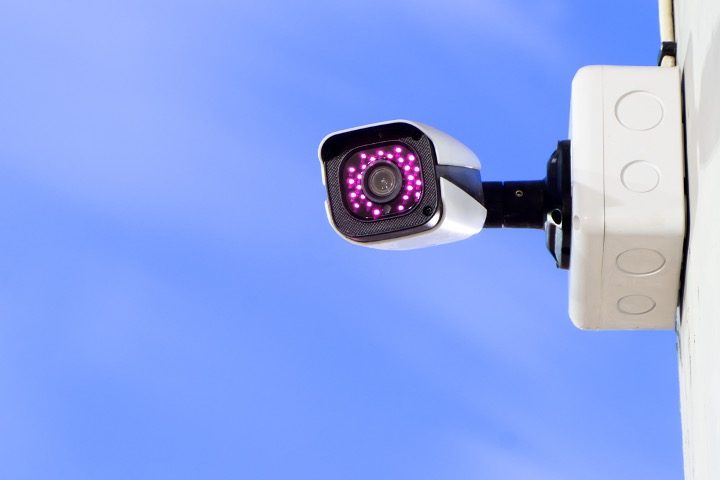
Millions of American children are being insensibly softened to the boundless scope of a federal surveillance state. From hallway cameras to cameras in classrooms, American children from age 4 or 5 to 18 grow up under the never-blinking eye of the federal government. Additionally, they are told that but for this monitoring they would be at greater risk of violence at school. This will result in Generation Z regarding federal surveillance as no more noticeable than a cloud on a rainy day.
It is this desensitization that has drawn the attention of a new report on the growth of the schoolhouse surveillance state and the effect such an atmosphere will have on this generation.
In a revealing report on the effect of surveillance on the minds of students, “Digital Dystopia: The Danger in Buying What the EdTech Surveillance Industry Is Selling,” the American Civil Liberties Union (ACLU) fires out of the chute in its condemnation of the unholy coalition of the surveillance industry and public schools:
Over the last two decades, a segment of the educational technology (EdTech) sector that markets student surveillance products to schools — the EdTech Surveillance industry — has grown into a $3.1 billion a year economic juggernaut with a projected 8% annual growth rate. The EdTech Surveillance industry accomplished that feat by playing on school districts’ fears of school shootings, student self-harm and suicides, and bullying — marketing them as common, ever-present threats.
While its description of the dystopian atmosphere of the schools signing on to equip halls, walls, and classrooms with surveillance equipment is praiseworthy, the ACLU acts too much like the ACLU in focusing on the sins of the capitalists, rather than on the comparatively more sinister acts of the administrations of school districts around the country. Only one side of the law of supply and demand is blamed for the growth of this public school panopticon. The ACLU nearly ignores the fact that the superintendents and school boards clamoring for installation of surveillance equipment and software could stand against authoritarianism and reject all offers of such infrastructure.
Its obvious bias aside, there is much that is valuable and actionable in the group’s report on school surveillance.
Perhaps the most intrusive of all the surveillance programs are the surveillance cameras. The software that runs these cameras is shockingly sophisticated, particularly in light of the purported aim of simply keeping kids safe.
These technological tools can recognize faces, compare them to photos of the kids on school servers, record every student’s routine, and then use mathematical algorithms to predict future behavior, as well as alert administrators to unusual (potentially harmful) behavior.
“False hits, such as mistaking a broomstick, three-ring binder, or a Google Chromebook laptop for a gun or other type of weapon, could result in an armed police response to a school,” the report warns.
Such an overreaction would be excused as being better safe than sorry, but such maxims will not do much to calm a student subjected to a SWAT intervention.
Something the ACLU does not address in its report — not surprisingly — is the synergy of surveillance and wokeness. This deadly duo will be not only the end of privacy, but potentially the end of all civil rights, and perhaps ultimately the concept of unlawful searches and seizures altogether.
As stated above, school districts typically cite school shootings as justification for keeping kids under constant watch, but there is no evidence that surveillance cameras reduce violence on campus.
While the majority of surveillance cameras are deployed in hallways or common areas such as cafeterias, libraries, or parking lots, there are a growing number of districts installing video-surveillance cameras in the classroom. Consider this from a report on school surveillance and safety:
Few districts have added cameras in classrooms versus school hallways, but the number is growing. Texas, for example, passed a law in 2015 mandating that all schools video- and audio-record classroom interactions between special education students and their teachers if requested to do so. The primary purpose of the law is to protect special education students from abuse in the classroom, but advocates claim it should also be praised as a tool for both teachers and students who face false accusations of inappropriate conduct: They will be able to point to the camera recording as evidence.
The report, authored by the National Association of State Boards of Education, went on to insist that “Administrators often hope that visible security measures, such as video surveillance, will make students feel more secure and perhaps also deter bad behavior.”
And here is where these “safety measures” could become tools of oppression, particularly against those families whose principles run counter to the prevailing perversion passing as “education” in classrooms today, speaking specifically of graphic discussions of sex acts and the “lessons” offered by transgender speakers.
The ACLU report additionally identifies the software that tracks, catalogs, and stores social media posts of students. Not only is this search and seizure unconstitutional, but it will undoubtedly result in grown up Gen Zers who don’t fight the ever-expanding surveillance network, leaving all Americans suspect to being watched.
Being aware of this awful situation is only the first step in stopping the untrammeled expansion of the surveillance state. We must actively work against such projects.
Parents must take into consideration the powerful coalition of technology, federal education incentives, and child protective service abuses. They must beware of the zealous enforcement of “woke” regulations and standards being adopted by K-12 school districts in an effort to qualify for federal funds tied to implementation of federal “inclusivity” programs.
Furthermore, current U.S. law allows for visual and audio monitoring in any area where there is “no reasonable need for privacy.” And finally, schools are permitted to record students for purposes of “safety” and “education,” and do not need parental consent to do so.




